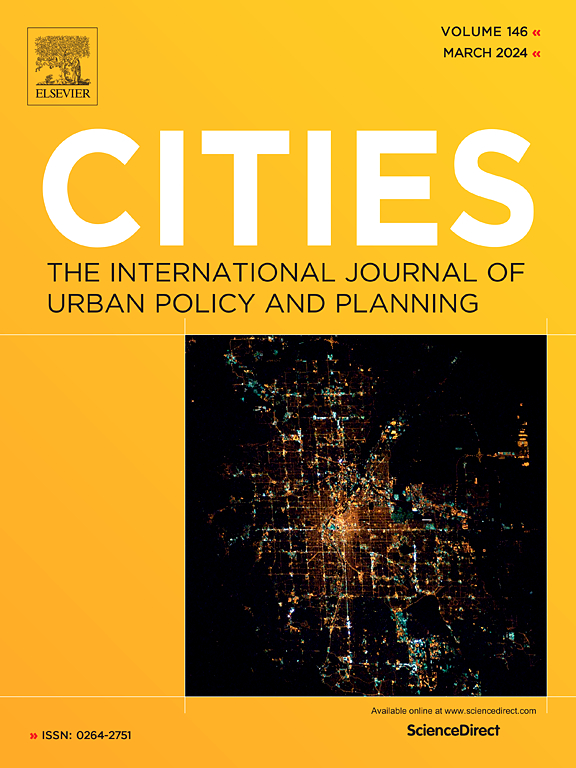作为规划工具的绿色基础设施:增加公共场所植被的城市再设计战略的全面系统化
IF 6
1区 经济学
Q1 URBAN STUDIES
引用次数: 0
摘要
城市目前正面临着气候变化。在全球范围内,温室气体排放是气候变化的主要驱动因素,而在地方范围内,这一作用主要是通过抑制植被,为不透水的表面让路来实现的。因此,绿色基础设施必须成为城市规划政策和程序的一部分,作为一种规划工具和关键要素,使城市结构中植被的增加变得可行。然而,如果重点关注的是缺乏绿化空间的综合区域,这项任务就更加艰巨。因此,这项工作旨在对全球范围内的科学文献和灰色文献进行全面审查,系统整理城市规划工具,为增加城市综合空间和公共空间的植被提供策略。通过在科学资料库和城市官方网站上进行搜索,我们获得了 126 项战略样本,这些战略分布在 73 份文件、22 个国家和 46 个城市中。这些战略根据其侧重点进行了系统化:街道重新设计(SR)、闲置空间(IS)、铺设路面(DP)和在私人区域开辟公共通道(PP)。这种系统化的方法证明,在整个综合城市结构中增加植被是一项巨大的挑战,但绝对是可行的。本文章由计算机程序翻译,如有差异,请以英文原文为准。
Green infrastructure as a planning tool: A comprehensive systematization of urban redesign strategies to increase vegetation within public places
Cities are currently facing climate change. While the greenhouse gases emissions are its main driver on the global scale, on the local one this role is mainly played by the suppression of vegetation to make way to impervious surfaces. Thus, green infrastructure must be part of urban planning policies and processes as a planning tool and a key element to make the increase of the vegetation within the urban fabric viable. However, this task is harder when consolidated areas, where there is a lack of space to add greening, are in focus. Thus, this work aimed to develop a comprehensive review worldwide, including either scientific and grey literature, systematizing urban planning instruments that provide strategies to increase the vegetation in consolidated and public urban spaces. A search carried out in scientific bases and on the cities' official websites resulted in a sample of 126 strategies distributed in 73 documents, 22 countries and 46 cities. These strategies were systematized according to their focus: on street redesign (SR), idle spaces (IS), depaving (DP) and enabling public access in private areas (PP). This systematization brings evidence that the vegetation increase throughout the consolidated urban fabric is a great challenge, but definitely feasible.
求助全文
通过发布文献求助,成功后即可免费获取论文全文。
去求助
来源期刊

Cities
URBAN STUDIES-
CiteScore
11.20
自引率
9.00%
发文量
517
期刊介绍:
Cities offers a comprehensive range of articles on all aspects of urban policy. It provides an international and interdisciplinary platform for the exchange of ideas and information between urban planners and policy makers from national and local government, non-government organizations, academia and consultancy. The primary aims of the journal are to analyse and assess past and present urban development and management as a reflection of effective, ineffective and non-existent planning policies; and the promotion of the implementation of appropriate urban policies in both the developed and the developing world.
 求助内容:
求助内容: 应助结果提醒方式:
应助结果提醒方式:


